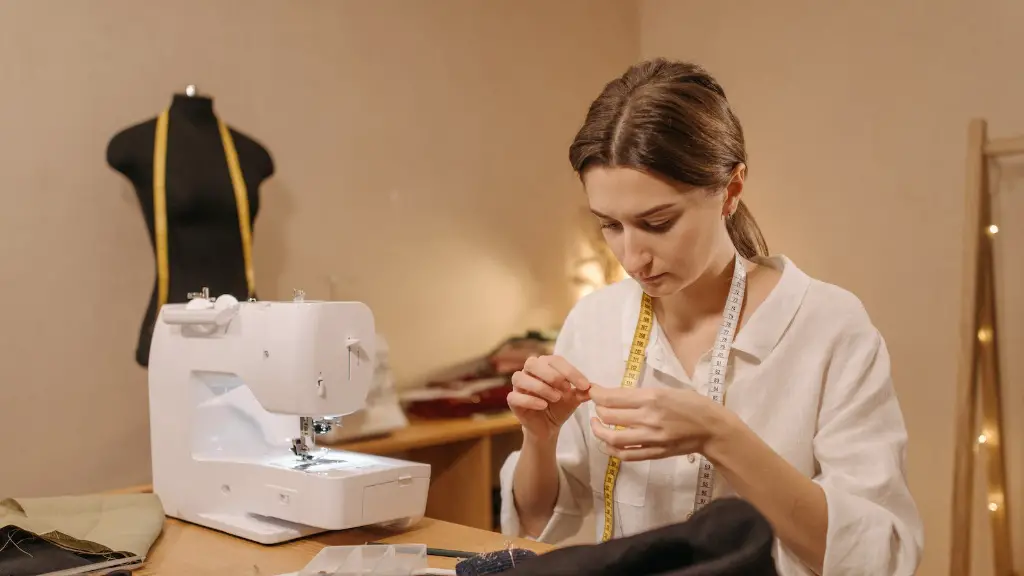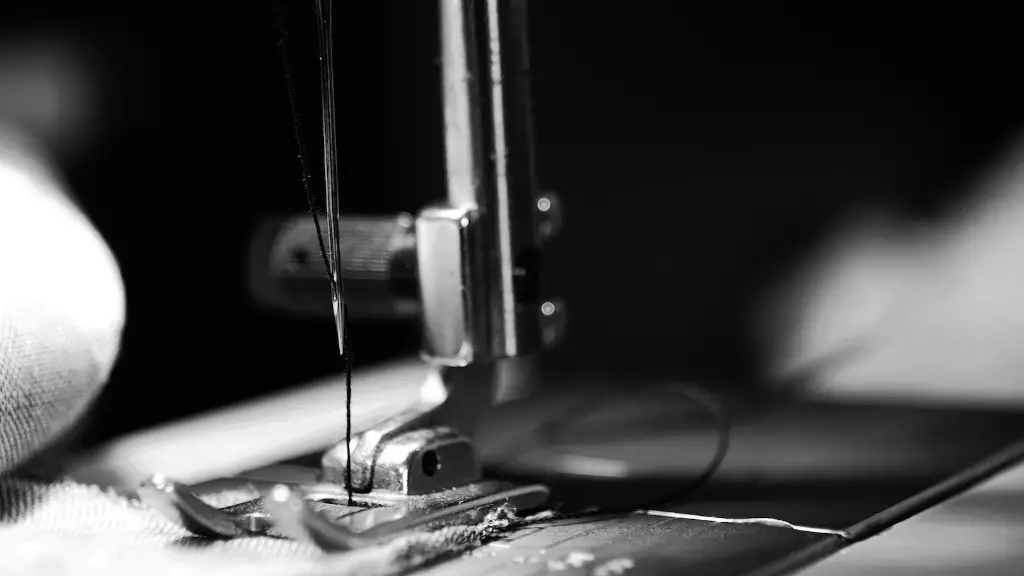Basic Principles of Embroidery with a Sewing Machine
Embroidery is the art of decorating fabric with needle and thread, stitching together precise and intricate designs. Embroidery has been an important part of the making of textiles for many centuries. Although traditional hand embroidery is still extremely popular today, nowadays it is often done with machines. Sewing machines are capable of producing a wide range of embroidery techniques, from simple to intricate, allowing you to create beautiful projects for home decor and fashion.
When embroidering with a sewing machine, it is important to understand the basic principles of the technique. Sewing machines use specialized software to create embroidery patterns. The software is used to create the embroidery design, as well as to edit, resize, and customize it to fit the project. once the design is complete, it is saved on a memory card or USB drive that can be inserted into the machine. The machine reads this information and uses it to stitch out the design.
One of the most important considerations when sewing with a sewing machine is the type of embroidery thread and fabric that should be used. Different fabrics and threads require different types of needles, presser feet, and tension settings. For example, thinner fabrics and threads may require a finer needle, while thicker fabrics and threads require a larger needle. When selecting thread, it is important to consider the color and weight of the fabric being embroidered. It is also important to select thread with a high-sheen finish, as this will create a more professional-looking end product.
Another important factor to consider when embroidering with a sewing machine is the type of stabilizer that should be used. Stabilizers are used to provide support for embroidery designs and to help prevent stitches from sinking into the fabric. They also help reduce thread breakage and puckering. Generally, there are two types of stabilizer: cut-away and tear-away. Cut-away stabilizers are designed to stay in the fabric after the design has been finished, while tear-away stabilizers can be removed from the fabric after the design has been completed.
In order to achieve professional-looking results, it is important to use the correct tension settings for the fabric, thread, and stabilizer being used. Generally, a looser tension is used for finer fabrics and threads, while a tighter tension is used for thicker fabrics and threads. The tension settings should be adjusted accordingly. In addition, the type of presser foot should be chosen to suit the type of fabric being used. Lastly, the stitch length, width, and speed settings should also be adjusted to ensure proper embroidery.
How to Place the Embroidery Design
After the fabric, thread, stabilizer, and tension settings have been chosen, it is time to begin the embroidery process. The first step is to place the embroidery design on the fabric. Many sewing machines come with an embroidery hoop, which is used to hold the fabric and design in place during the stitching process. The hoop should be placed on the garment or fabric and adjusted to the correct size for the design. Once the hoop is in place, the design is then placed in the hoop and secured with embroidery stabilizer or fabric adhesive.
Once the design has been secured, the machine is then ready to begin the stitching process. Depending on the type of machine, the design may need to be input into the machine via the software or via a memory card. Once the design is loaded, the embroidery settings can then be adjusted to ensure that the best results are achieved.
Once the design has been loaded and the settings adjusted, the machine can then begin the stitching process. The machine will stitch out the design according to the settings that have been chosen. As the machine stitches, it is important to stop periodically and check the fabric for tension or puckering. The tension should be adjusted if necessary, and the fabric should be flattened if any puckering occurs.
Caring For Embroidery Projects
After the embroidery is finished, the hoop should be carefully removed and the fabric can be washed to remove any excess stabilizer. Once the fabric is dry, the embroidery can be ironed with a low heat setting to further flatten the fabric. It is important to use a pressing cloth to protect the embroidery and to avoid over-ironing the fabric, which can cause it to shrink.
When storing the embroidery project, it is important to protect it from creasing or stretching. This can be done by rolling the fabric and placing it in an acid-free storage box or sleeve. If the fabric is particularly delicate, it may be best to encapsulate the embroidery in acid-free paper or a storage sleeve. This will help protect the embroidery from discoloration, dust, and insect damage.
Edit and Resize Embroidery Designs
One of the great advantages of using a sewing machine for embroidery is that designs can be easily edited or resized. This allows for greater flexibility and creativity when creating embroidery designs. With the help of the software, it is possible to adjust the size, remove parts of the design, rearrange elements, change colors, and even add text.
It is important to note that as the design size increases, the stitches will become more visible. For most projects, a stitch size of 4-6 mm is sufficient. With finer fabrics, a smaller stitch size of 1-3 mm can be used. The number of stitches can be increased to create a denser, more detailed design.
When editing or resizing a design, it is important to keep in mind the fabric and thread that will be used. If a design is resized to be too large, the stitches may become too visible and the fabric may be too dense. Larger designs may require the use of thicker thread and fabrics. If a design is resized to be too small, the stitches may be too close together and the design may not be visible.
Troubleshooting Sewing Machine Embroidery
Even the most experienced embroiderers may experience problems when stitching with a sewing machine. If the embroidery is not stitching properly, it is important to troubleshoot the issue and make any necessary adjustments. The most common problem is thread breakage, which can be caused by incorrect tension, incorrect needle size, or incorrect threading of the machine.
If the thread is breaking, the tension should be adjusted to ensure that it is not too tight. The needle size should also be checked, as a needle that is too large can cause the thread to break. In addition, the thread may need to be re-threaded if it is tangled. Lastly, the presser foot should be checked to make sure that it is properly seated on the fabric.
If the fabric is not being properly fed into the machine, the presser foot, feed dogs, or fabric guides may need to be adjusted. The presser foot should be set to the correct height and the fabric guides should be aligned with the edges of the fabric for even feeding. Lastly, the feed dogs should be checked to ensure that they are properly set.
Finishing Embroidery Projects
Once the embroidery process is complete, the project should be properly finished. The excess stabilizer can be trimmed away and the excess fabric can be removed. The fabric can be pressed with an iron to flatten the stitches and the edges can be finished with a zigzag stitch or another type of decorative edge. For fabric projects, a backing layer can be added underneath the embroidery to provide strength and stability.
If the project is finished properly, it will be stronger and more durable. It is important to store the project properly to prevent discoloration and to protect the embroidery from fading. It is also important to care for the embroidery project as instructed; for instance, items with high-shine materials should not be washed in hot water as this can damage the threads.
Conclusion
Embroidery with a sewing machine is an enjoyable and creative way to produce beautiful results. By understanding and following the basic principles of the technique, as well as troubleshooting any issues that arise, it is possible to create professional-looking projects with ease. With the right combination of fabric, thread, stabilizer, and tension settings, anyone can learn to embroider with a sewing machine like a pro.




